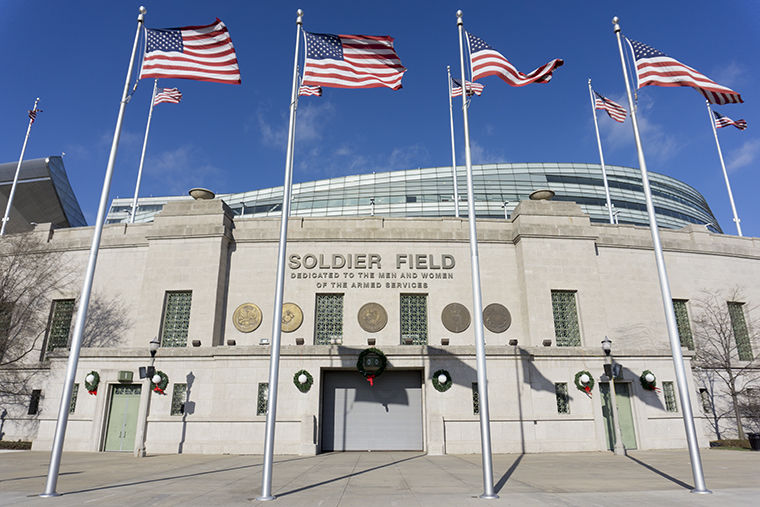$6 hot dog anyone? Why attending professional games breaks the bank
To get into Solider Field to see the Chicago Bears play, fans on average pay more than $200 per ticket for the 2017 season.
December 11, 2017
Now more than ever, a fan’s access to local professional sport teams is hindered by financial barriers.
Chicago is home to teams in the four most popular professional leagues—NBA, NFL, MLB and NHL—with citywide fans dedicated despite the highs and lows. But extreme loyalty could mean trouble for a frugal budget, as fans across all sports have found out.
“People look at a Cubs game as an annual or semi-annual outing,” said George Castle, author and longtime Chicago sports journalist, “[so] they set aside hundreds of dollars for it.”
The cost of the all-around experience of games started to climb with ticket prices, which rose in the early ‘90s when MLB signed its first billion dollar television contract with CBS. Team owners spent the money on players’ salaries as soon as the first checks from the contract came in, Castle said, but soon had to raise ticket prices when teams realized money was short.
Following similar pricing trends with teams in season now, the Chicago Bears has the ninth most expensive ticket price in the NFL, averaging $234.38 per ticket. For its Dec. 24 game versus the Cleveland Browns—the only NFL team still with no wins for the season—the cheapest ticket retails at $77. The Chicago Blackhawks has increased its ticket prices every year for the past eight seasons, which has driven the average ticket cost to nearly $94. The average ticket price for the 2009–2010 season was $55.
Most sports venues used to have “cheap seats,” which were an option for those on a tight budget. But sports games turned into opportunities for corporate entertaining, Castle said, which also increased prices.
“For the last 20 years, we’ve been in this ticket price spiral,” Castle said. “Corporations wanted to entertain people, so that costs money.”
Castle tried to sell his book, “Where Have All Our Cubs Gone,” in 2005 at Miller Park—home of the Milwaukee Brewers—because there could be up to 30,000 Cubs fans there if the team was in town. But the concessionaire at Miller Park, Sportservice, wanted to sell the book at a much more inflated price than it retailed, he said.
“The concessionaire had to do their markup to get their share, make money off each sale and deal with the cost of distribution,” Castle said, “so a $26.95 book would have to be sold for $48.”
That concessionaire markup is reflected in everything sold at the venue, including food. Attending a Blackhawks game warrants a day of planning, which includes eating beforehand, said Christian Peshek, 26, manager at the Barrington, Illinois, Jimmy John’s.
“[Teams] could definitely drop the prices on food, beer, water and pretty much anything there and still turn a profit,” Peshek said. “You have to pay that price or leave the stadium. They have you at their will.”
Though Peshek thinks overall costs could be more fairly priced, it does not affect his support for his favorite teams. The players have no say in the business, and there is a difference between players and vendors, he added.
The Blackhawks’ active social media presence lets fans feel part of the experience even if they cannot afford to attend a game, said junior multimedia journalism major Ria Dockerty. It is hard to budget tickets for a Blackhawks game, but social media fills that void, she said.
Innovative social media methods—podcasts with player appearances, behind-the-scenes Snapchat interviews with players and livestreams of warmups—provide fans access to content they would not think they would be able to get, Dockerty said.
“Here’s the players you love [and] see on the ice, and here’s them being complete dorks,” she said. “It gives you a whole different side as a fan.”
Despite the cost, Dockerty attends three–five games per season but uses StubHub for nosebleed seats or standing-room-only tickets—where attendees can enter the stadium but do not have a seat—sometimes even after the game starts.
“If I can get standing room only, beggars can’t be choosers,” Dockerty said. “Being there is an experience in itself that’s worth sitting in the ‘bad seats.’”








